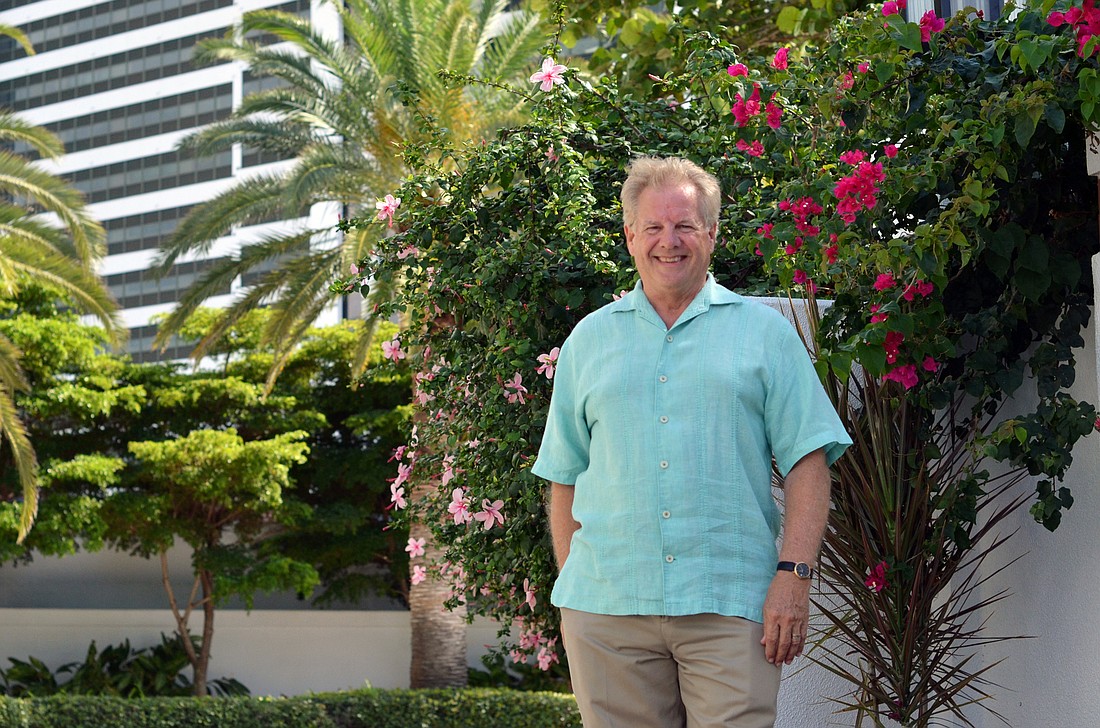- April 29, 2025
-
-
Loading

Loading

With construction on the upswing in downtown Sarasota, one of the challenges the city is facing concerns the needs and interests of residents in the urban core. Patrick Gannon, president of the Downtown Sarasota Condominium Association, says his organization tries to balance education and advocacy, uniting several thousand individuals living downtown under one umbrella group.
We spoke to Gannon about the future of downtown Sarasota, the progress on homelessness issues and misconceptions concerning condo residents.
I know homelessness is a concern for many residents — what are your thoughts on the city’s efforts to curb the issue?
First and foremost, the major issue from the residents has been one of safety. I think the residents have been very supportive of all of the outreach activities that the city and many of the nonprofit organizations have been undertaking to provide services to the homeless. We’ve been trying to continue to urge the city to move forward with its leadership role. That’s why we took a strong position earlier this year when the city manager, Tom Barwin, came out with his eight-point plan — we spoke in support of that to let the commissioners know we thought that was moving in the right direction, and that they should endorse and continue to support those activities.
As downtown evolves, how do you work to maintain quality of life for people living in the area?
We try to take a balanced approach. We have a committee on homelessness. We also have a green space committee, a committee focused on safety — interfacing with the police department — and we have a committee focused on transportation. Those have been basically the four key issues our residents have voiced. We’ve organized committees around that to keep a focus on that.
We know transportation and traffic is a big issue. That’s why we held a transportation forum Monday evening, to give condo residents the latest information on what’s happening — what the plans are, what’s happening in their areas. We’ve also taken an advocacy position when the city or region or state is working on various plans.
Most recently, the Florida Department of Transportation held a public hearing on the U.S. 41 traffic separator project that’s going to put a median between Gulfstream and Fruitville. FDOT was primarily focused on improving the efficiency of the traffic flow. We advocated that that needs to be balanced with the needs of residents — both the local driving patterns and the safety of pedestrians. While it might be more efficient to have traffic going through there at a higher speed — currently it’s 40 mph — we advocated that this is an opportune time to reduce the traffic speed to 30 mph.
It’s pedestrian safety as well as local driving patterns that we’re advocating for. We’re learning that when there are public hearings, that’s the time to be sure this info is put on the table and try to bring a balance to that.
What misconceptions about downtown condo residents you think need to be corrected?
I think what we are seeing, through the residents of the downtown, is the makeup is quite diverse. There are a number of younger families moving into downtown condos, and in many cases it’s families that are still actively working. I met with the president of the Orange Blossom Tower — the president there is actively working with a family. There are other residents that have families in the downtown area.
It’s important to them we have an active, vibrant downtown area. That we’re encouraging the kinds of businesses and restaurants and other venues that could be appropriate to the needs of the families in the area. Advocating for not only green space, but including parks and things of that nature, too. Realizing we do have a much broader base of residents and tying to take action.
A couple of months ago, we were informed of a development that was targeting workforce housing for younger people who are in the technology space. We evaluated it and came forward with benefits. One of the ways to reduce traffic is to have people who are actively working and living in the downtown. They’re not driving from the suburbs to get to work downtown — they’re actually living here. You move downtown, and maybe both parents can actually walk to work and give up one of their cars. That actually reduces traffic congestion, when we have the ability for more workforce housing here.
When you have more people who are working downtown they stay downtown and spend money at downtown restaurants and businesses. It’s good for the businesses downtown to encourage more working families to live in the downtown area. We took an advocacy position to say yes — we think this is good for downtown to have that type of accommodation.